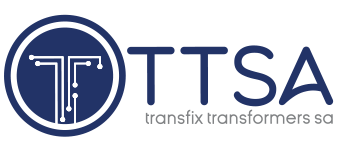South Africa is enjoying a rare streak of uninterrupted electricity right before elections, drawing more suspicion than praise in a nation that’s become accustomed to the daily power cuts that have dragged on for years. The country is currently in its fourth successive week of no outages — the longest period South Africans have consistently had electricity supply in more than two years.
Construction group Wilson Bayly Holmes-Ovcon (WBHO) and renewable energy company Sola Group have completed construction of the Merak 2 & 3 solar photovoltaic projects near Lichtenburg, in North West.
The two solar plants, with capacities of 130 MW and 126 MW, respectively, span an area of 4 km2 and will deliver power through a wheeling agreement to mineral sands miner Tronox.
The proliferation of substandard and noncompliant electric cable products in the South African market poses significant risks to consumers and businesses, especially amid the country’s constrained and stagnating economy, says electronics manufacturer Apex Cordset Technologies (Apex). Apex is a dynamic company with a strong focus on technology and manufacturing, specialising in a range of safe and compliant electrical products and cable assemblies.
Independent power producer Mulilo reports that Jan Fourie has officially assumed the role of CEO, where he will oversee the company’s growth ambitions in South Africa’s public-procurement and private-offtake markets for both renewable energy and battery storage. Fourie, who is an electrical engineer with a master’s in business administration, has 17 years of experience in the African power sector, most recently as a senior executive as Scatec.
City of Johannesburg mayor Kabelo Gwamanda announced on Thursday that the City intends to add an additional 50 MW of power to its grid by bringing online the Durban Street Substation, in the next financial year. Gwamanda was presenting the State of the City Address in Johannesburg, where he said the City has also planned for an additional 100 MW of energy by the financial year’s end.
Steelmaker ArcelorMittal South Africa (AMSA) CEO Kobus Verster has confirmed that the company will be converting one of its three blast furnaces into an electronic arc furnace (EAF) within the next four years. The company currently has two blast furnaces in operation at its Vanderbijlpark facility. However, since one of these is due for a refurbishment and relining in 2029, the decision has been made take the opportunity to rather convert it to an EAF, as the latter produces fewer emissions.
Steelmaker ArcelorMittal South Africa (AMSA) is planning to start construction on a 200 MW solar photovoltaic (PV) power plant at its Vanderbijlpark facility, in Gauteng, towards the end of the year, CEO Kobus Verster has told Engineering News. He explained that the installation would serve as one of AMSA’s first steps towards decarbonising the company’s energy requirements.
GoSolr, a company backed by South African billionaire Patrice Motsepe and the continent’s biggest bank, plans to spend R10 billion to roll out a model of renting solar panels and batteries to homes in the nation plagued by blackouts. The two-and-a-half-year-old company seeks to install about 500 megawatts of solar-generation capacity in four years. That’s up from its current 70 megawatts, said Andrew Middleton, GoSolr’s chief executive officer. It has attracted investment and financing from Motsepe’s African Rainbow Capital Investments and Standard Bank Group.
Two solar photovoltaic (PV) projects selected as preferred bids under Bid Window 6 (BW6) of the Department of Mineral Resources and Energy’s (DMRE’s) renewable energy procurement programme reached commercial close on April 30. The projects, which were part of a group of six PV projects to advance to preferred-bidder status for a 1 000 MW allocation in 2022, have a combined capacity of 360 MW and a combined investment value of R4.9-billion.
Johannesburg’s City Power is seeking manufacturing and venture capital partners to further develop and pilot a rugged ‘energy box’ concept in one of the city’s 312 informal settlements as a possible greener and safer alternative to the illegal connections that currently predominate. Chief engineer for renewable energy Paul Vermeulen says the idea is to locate 3 kWh energy storage boxes – linked to lighting, charging and cooking appliances – within individual dwellings and link these to a centralised solar photovoltaic generator securely located on a nearby warehouse or factory rooftop.
INDUSTRY NEWS
- NERSA appoints Electricity Market Advisory Forum to guide power-market reformDecember 19, 2025 - 2:04 pm
- Eskom offers more details on envisaged roles of the NTCSA and the TSODecember 18, 2025 - 11:04 am
- NTCSA says any electricity deal to salvage Mozal must ensure its financial sustainabilityDecember 17, 2025 - 3:01 pm
WHERE TO FIND US
Address
9 Yellow Street
Botshabelo Industrial Area
Botshabelo, Free State
Call / Email Us
Tel: +27 (0) 61 956 6772
Email: info@transfix.co.za
